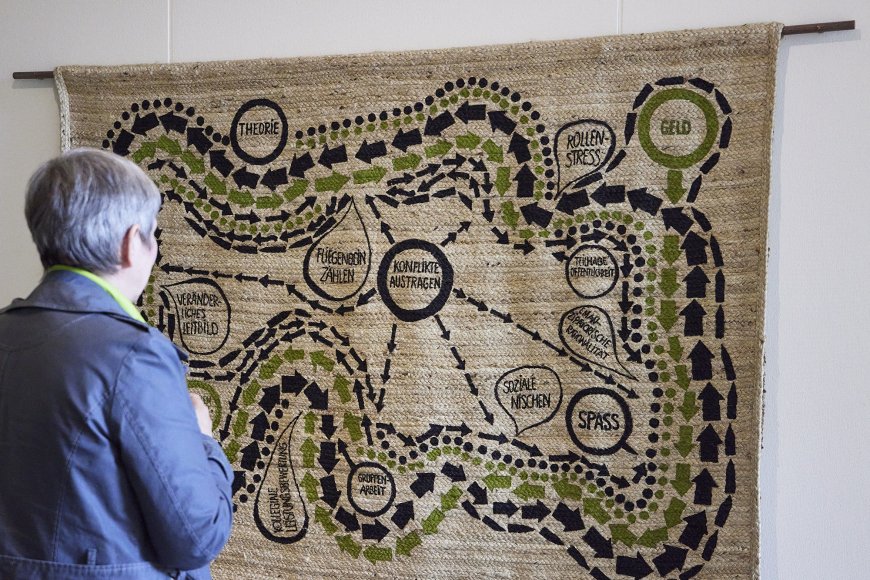
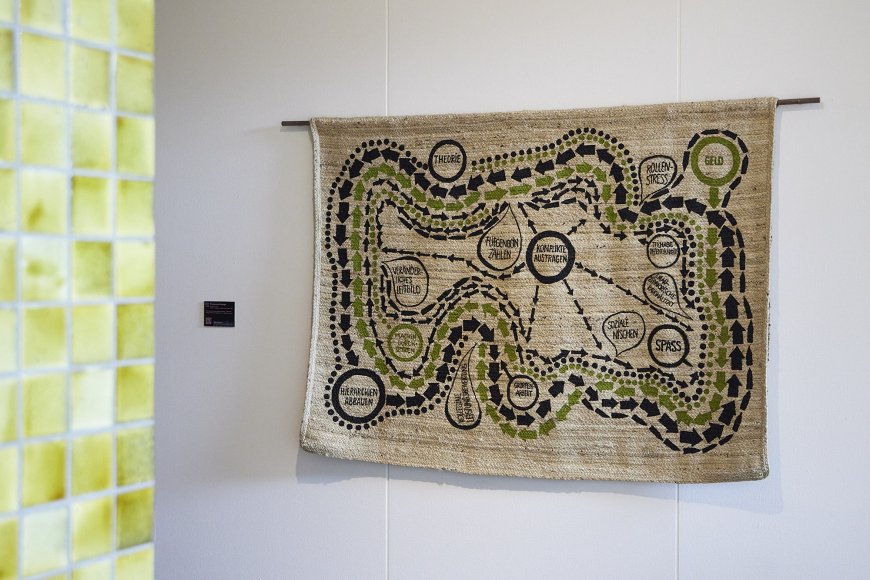
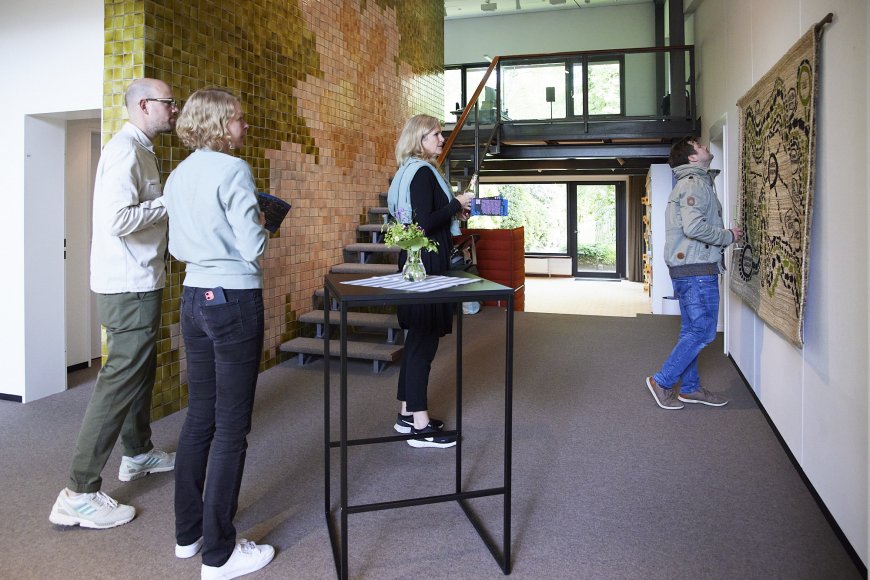
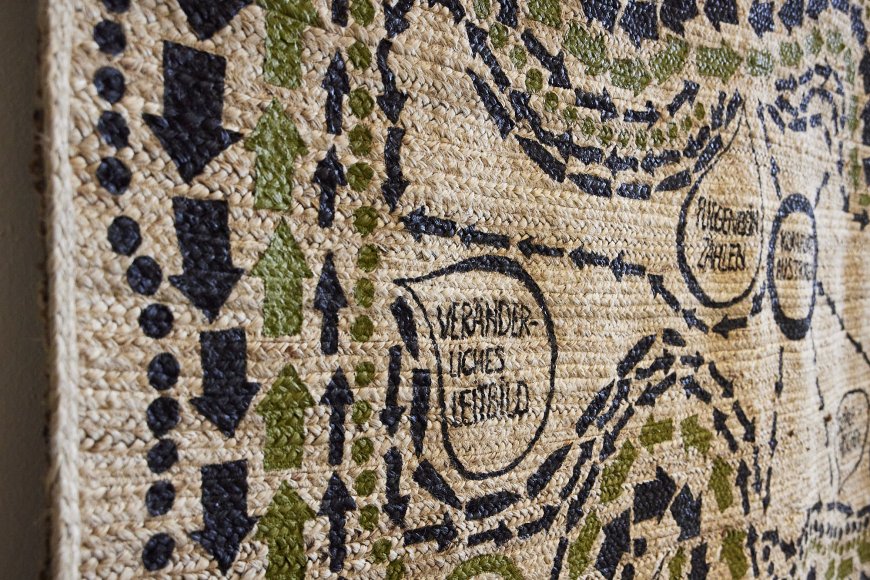
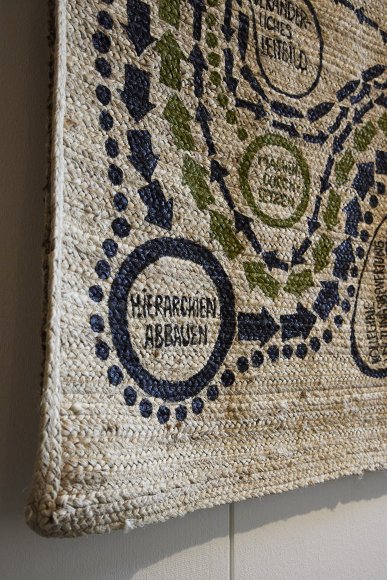
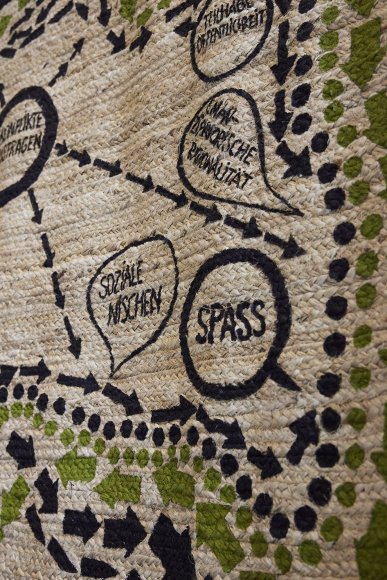
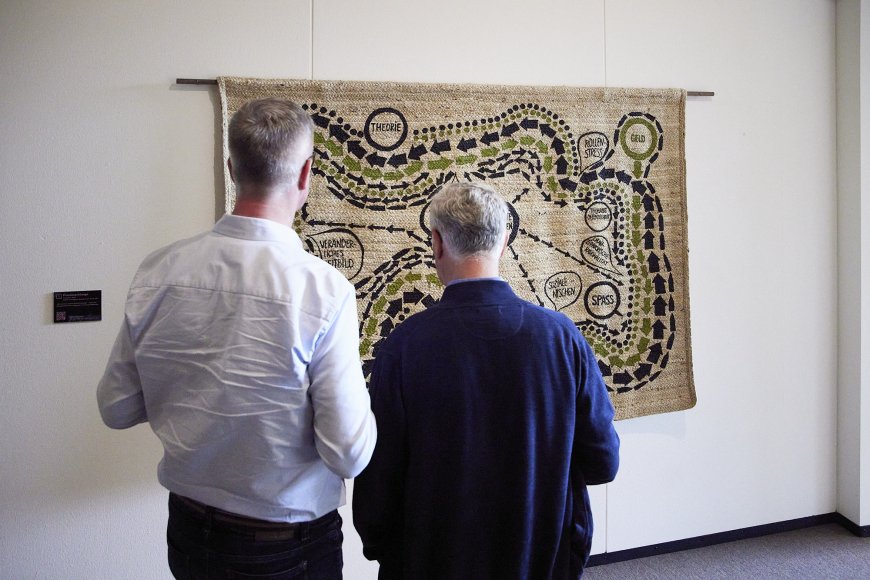
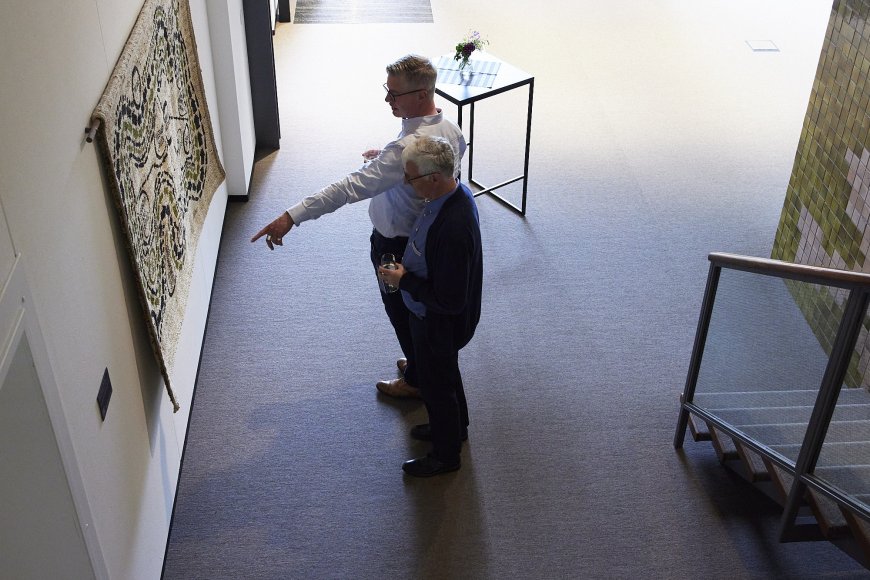
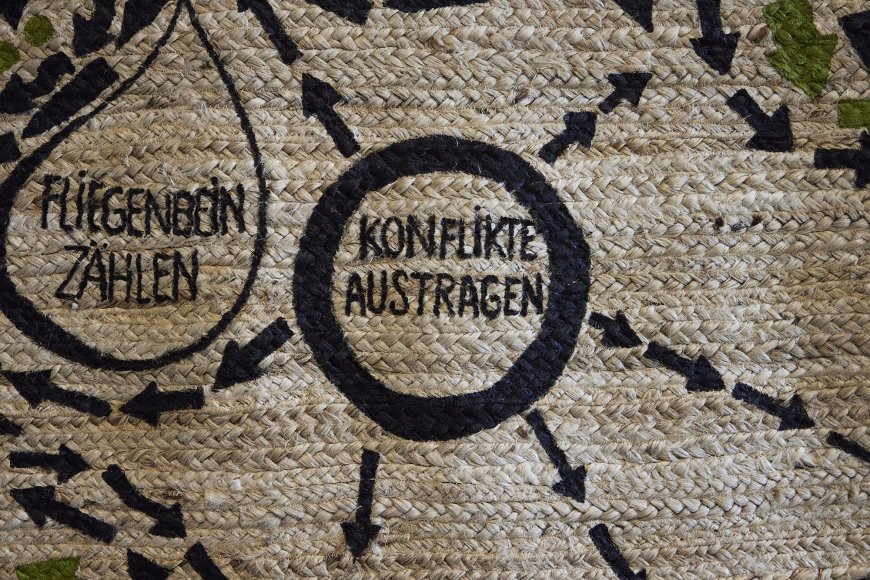
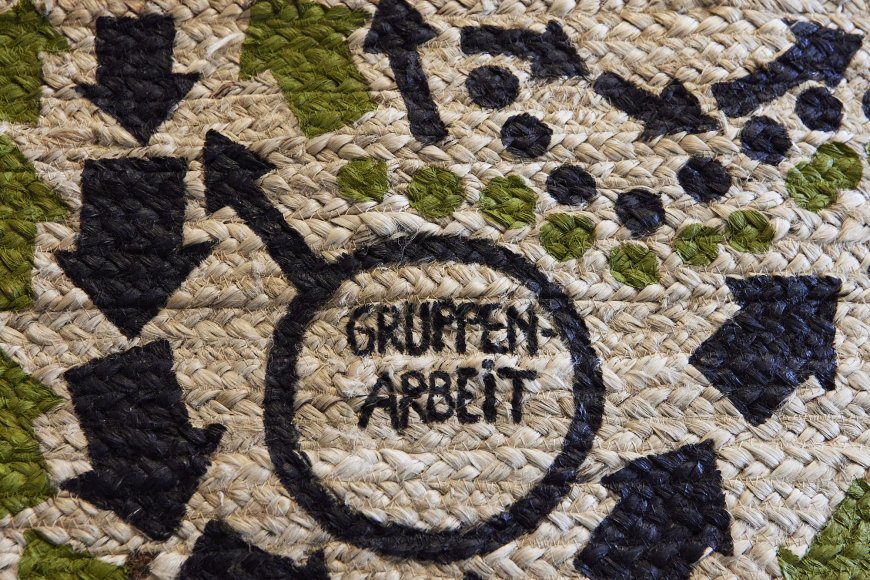
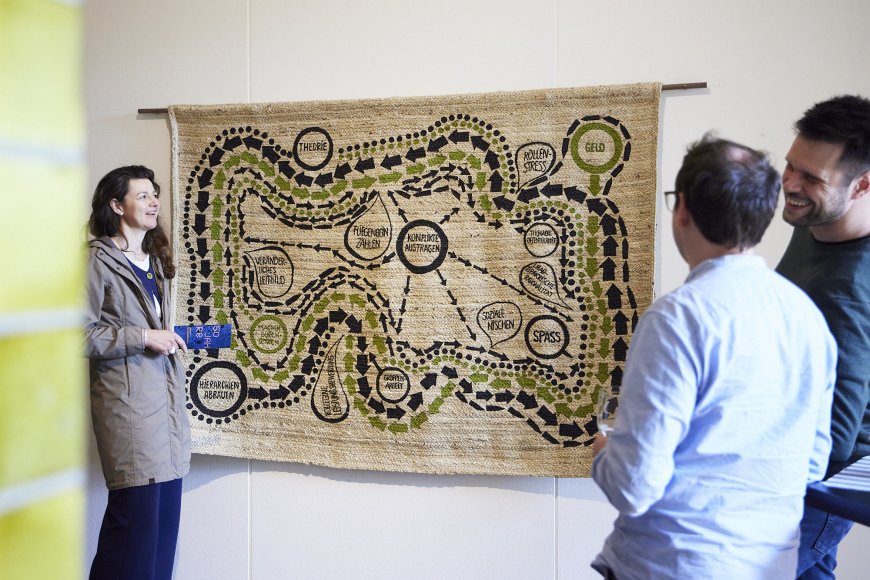
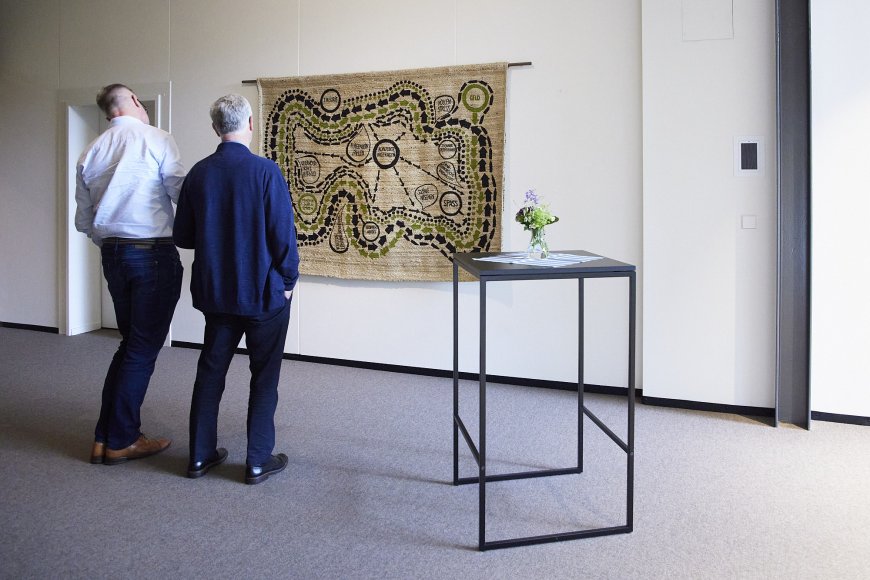
“Personal Attitude to Planning” is the title of a poster designed in 1971 by Friederike Müller for the Gruppe Komplexe Planung (Complex Planning Group), which was part of the Metaplan predecessor Quickborner Team. The Berlin artists’ collective
Fünfzehn has turned it into a tapestry that takes us back to Metaplan’s early days. What was intended as an illustration of a process becomes an aesthetic landscape that makes dynamics in organizations visible and tangible.












“We called it fingerplay because you can move your finger from one aspect (e.g. theory) via dots or arrows to the next aspect (e.g. dismantling hierarchy) and thus deal with our core points”: This is how Hans-Jörg Mauch described the landscape of black and green dots and arrows. In his view, the core points in the original poster are the elements that either should not be overlooked or specifically not ignored in organizational transformation processes: Openness to goals that are not only
desired from the outset, but arise because what seems to define the planning process is called into question; mission statements that are not permanently manifest, but changeable to remain effective; self-organization in the planning process to free those involved in planning from the confines of their organization. Back in 1971, this was seen as a form of emancipation in organizations.
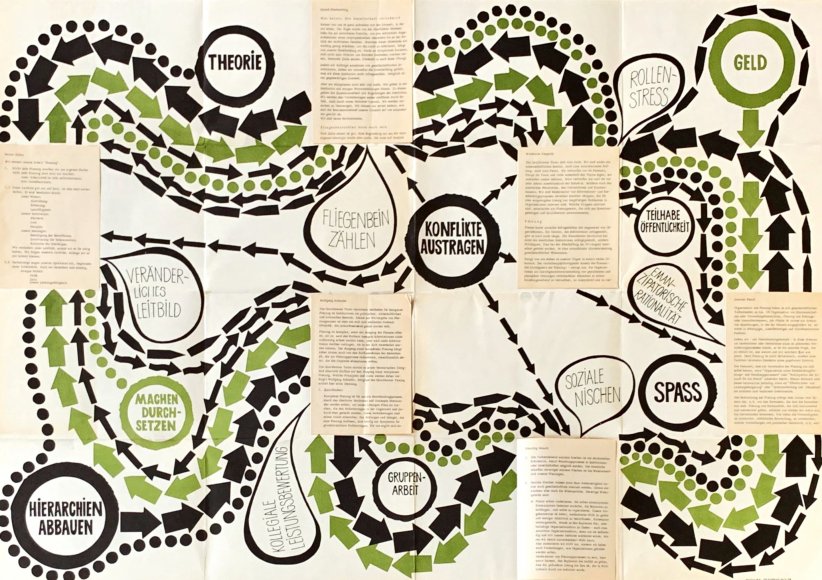
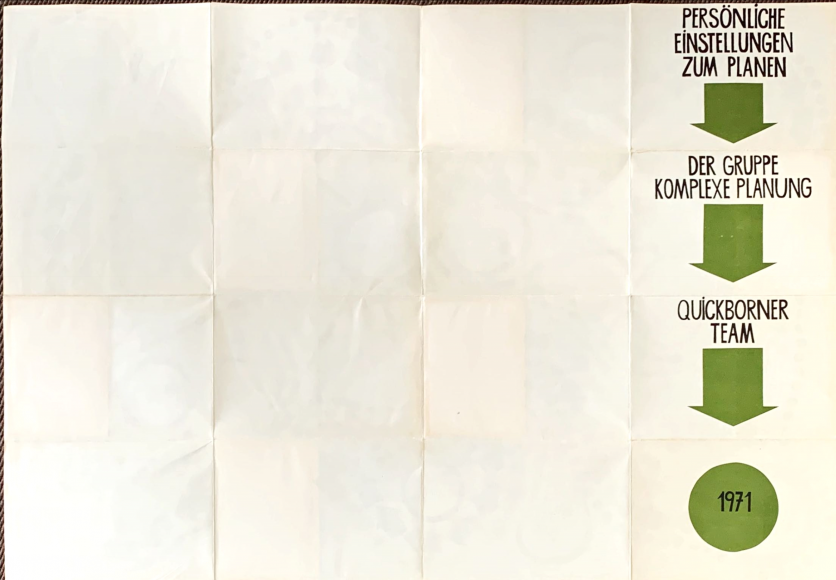
The authors of the original poster from 1971 certainly lived up to their name – Complex Planning Group. Between the arrows and dots the original poster features six small fold-out texts, which break up the performative process of meaning-making by physically tracing the lines of dots and arrows. Wavering between self-understanding and being programmatic, the metaplanners here explain what it means to plan. Planning emancipates, planning questions, planning is social engineering, planning makes people curious … planning is tiring, an observation Waldemar Kasprzik made based on the role of the planning team and the importance of the planning process in an organization. Understood as a “cooperative event
of problem-oriented people”, the radicality lies in planning when it “very quickly discovers dysfunctionality, analyzes it, experimentally places it in new social relations and thus remedies it”. Organizations do not always find this easy to endure, which is why the danger of isolating organizational design planning processes cannot be underestimated. That wise saying “planning tires” is said to have been frequently quoted in subsequent times by the founder Wolfgang Schnelle, especially in the context of political planning assignments. In an administrative context, it is still essential today to make planning comprehensible and transparent for as many of the people affected as possible.
“We are facilitators of information and decision-making processes between social groups pertinent to the balanced resolution of long-term problems in organizations.”
A description of what constitutes Metaplan from a merely internal perspective would be incomplete. That’s why we put together a variety of artistic positions that describe in different ways what constitutes Metaplan.
We’re looking back to ask ourselves what is to come. Welcome to the world of metamorphoses.
Transformation gets organizations moving – why a change of perspective can be worthwhile.
Between information markets and corridor gossip – experiencing the history of Metaplan in an unusual sound space.
Forms are lost and structures gained – how art can make interaction visible.
Change through attitudes, attitudes in change: how Metaplan ticks – past and present.
As a metaplanner striving for unambiguity in her statements, Tesle Schnelle Cölln’s art balances on the threshold between figuration and abstraction.
Visualization is the interaction of individual elements for an overall impression – in art and moderation.
From op-art to visual rhetoric – the art of moderation lies in the interweaving of individual elements.
Here, abstract geometric shapes are the basic elements of a visual language, through which communication develops into understanding.